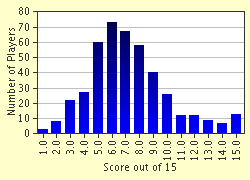Quiz Answer Key and Fun Facts
1. Charles I only became King because of the premature death of his elder brother, the Prince of Wales. If this brother had survived, by what title would he have become known?
2. King Charles I's son, Charles Prince of Wales, was appointed to the rank of Captain-General when he was only fourteen years of age.
3. Being Roman Catholic and French, the wife of King Charles was not particularly popular in Britain. However, she must have had some good qualities as an American colony was named after her! Which was it?
4. A Royalist officer by the name of Sir Faithful Fortescue changed sides during the Battle of Edgehill.
5. Which of these items would an English Civil War soldier never wear?
6. Royalist and Parliamentary officers were identified by the wearing of coloured sashes. What were the normal colours of these sashes?
7. Just before a major battle, a devout Royalist officer called Sir Jacob Astley uttered the following prayer which even today is in common use: 'O Lord, thou knowest how busy I must be this day. If I forget thee, do not thou forget me'. At which battle did he speak these words?
8. A close confidant of King Charles I was William Harvey. Harvey is famous for an important discovery he made. What exactly was this discovery?
9. Lt.-Colonel William Bariffe is renowned for certain books which he wrote before and during the English Civil War. These books were invariably about what subject?
10. Which of these is not a type of weapon in use during the English Civil War?
11. During the English Civil War, a "baldrick" was a scornful or offensive term for a page or other menial servant.
12. Certain senior political figures who had been directly involved in the trial and execution of Charles I, were later tried and sentenced for their involvement. By what term were these accused persons known?
13. Which of these is not an artillery weapon in use during the English Civil War?
14. Although commonly known as "The English Civil War", there were in fact three separate stages known as the First Civil War, Second Civil War, and Third Civil War. Who was King during the Third Civil War?
15. Not all of the battles between Royalists and Parliamentarians were fought in Britain and Ireland. Which of these battles was fought in America?
Source: Author
picqero
This quiz was reviewed by FunTrivia editor
bloomsby before going online.
Any errors found in FunTrivia content are routinely corrected through our feedback system.

